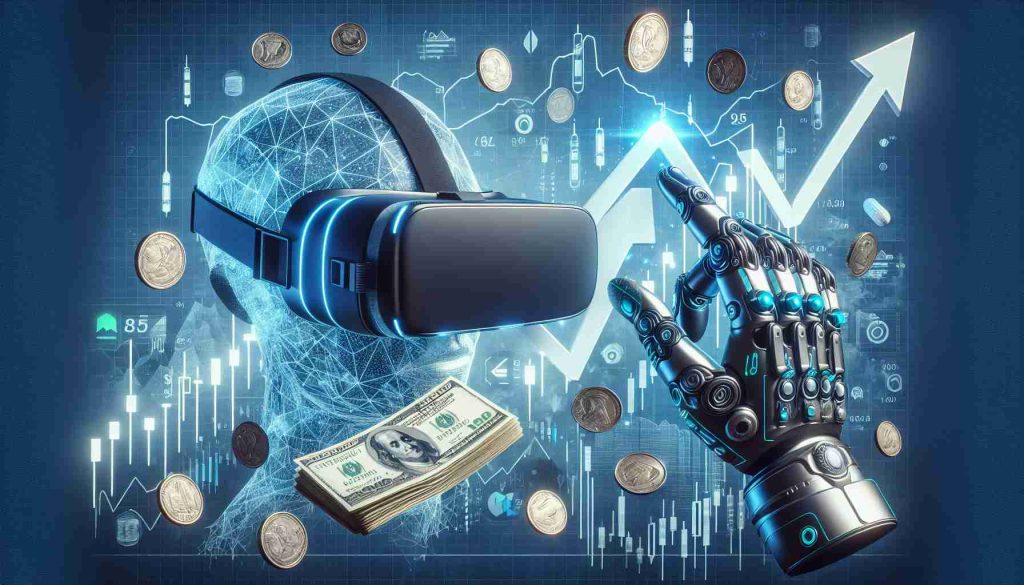Augmented Reality (AR) has transitioned from a futuristic concept to a transformative technology shaping our everyday experiences. As AR continues to evolve, it is revolutionizing various industries, enhancing both professional and personal interactions. This article delves into the evolution of AR, its current applications, and what the future holds for this exciting technology.
1. A Brief History of Augmented Reality
The origins of augmented reality can be traced back to the early 1960s, with pioneering work by computer scientist Ivan Sutherland. Sutherland’s development of the first head-mounted display, often referred to as the “Sword of Damocles,” laid the groundwork for AR. Over the decades, AR technology has advanced significantly, driven by improvements in computing power, mobile technology, and sensor capabilities.
In the early 2000s, AR gained traction in research and niche applications, such as military training and industrial design. The introduction of smartphones with powerful processors and cameras in the late 2000s marked a turning point, making AR more accessible to the general public. Today, AR is integrated into various aspects of daily life, from gaming and shopping to education and healthcare.
2. Current Applications of Augmented Reality
AR has made substantial strides in numerous fields, with applications that enhance both practical tasks and entertainment experiences:
- Retail and Shopping: AR is transforming the retail industry by enabling virtual try-ons and interactive shopping experiences. For example, furniture retailers use AR to allow customers to visualize how a piece of furniture would look in their home before making a purchase. Similarly, beauty brands offer virtual makeup try-ons, helping customers find the perfect shade without visiting a store.
- Healthcare: In the medical field, AR is used for surgical planning and training. Surgeons can overlay digital images onto a patient’s body during procedures, improving precision and reducing the risk of complications. AR also aids in medical education, providing interactive simulations and visualizations for students and professionals.
- Education and Training: AR enhances educational experiences by creating immersive learning environments. For instance, AR applications can bring historical events, scientific concepts, and complex systems to life, making learning more engaging and interactive. In vocational training, AR helps simulate real-world scenarios, allowing trainees to practice skills in a controlled environment.
- Gaming and Entertainment: AR gaming has gained popularity with titles like Pokémon GO, which blend digital elements with the real world. These games encourage physical activity and exploration while offering immersive experiences. Additionally, AR is used in entertainment venues to create interactive experiences and enhance live performances.
3. The Technology Behind Augmented Reality
AR technology relies on several key components to overlay digital information onto the physical world:
- Sensors and Cameras: AR devices use sensors and cameras to capture and analyze the environment. These sensors detect motion, orientation, and depth, while cameras capture visual data to align digital content accurately.
- Processing Power: The ability to process data in real-time is crucial for AR applications. Modern AR devices, including smartphones and smart glasses, are equipped with powerful processors that handle complex computations and render digital content seamlessly.
- Software and Algorithms: AR applications utilize sophisticated software and algorithms to recognize and track objects in the environment. Computer vision, machine learning, and spatial mapping are essential for creating realistic and interactive AR experiences.
- Displays: AR content is presented through various display technologies, such as smartphones, tablets, and head-mounted displays. Each display type offers different advantages, from the portability of mobile devices to the immersive experience of AR glasses.
4. The Future of Augmented Reality
The future of AR is poised to be even more transformative, with several emerging trends and developments on the horizon:
- Enhanced AR Glasses: The next generation of AR glasses promises to be more lightweight, comfortable, and capable of delivering high-quality experiences. Advances in display technology and miniaturization will enable more seamless integration into daily life, making AR a natural extension of our vision.
- 5G Connectivity: The rollout of 5G networks will significantly enhance AR experiences by providing faster data transfer and lower latency. This improvement will enable more sophisticated AR applications, such as real-time collaboration and high-definition remote assistance.
- AI Integration: The integration of artificial intelligence with AR will enhance the accuracy and relevance of digital overlays. AI algorithms will enable more advanced object recognition, contextual understanding, and personalized experiences, making AR interactions more intuitive and effective.
- Augmented Reality in Urban Planning: AR will play a crucial role in urban development and planning, allowing architects, planners, and citizens to visualize and interact with proposed projects. This capability will facilitate better decision-making and public engagement in shaping the future of cities.
5. Challenges and Considerations
Despite its potential, AR faces several challenges that need to be addressed:
- Privacy and Security: As AR devices collect and process environmental data, concerns about privacy and data security arise. Ensuring that AR applications handle personal information responsibly and transparently is essential for building user trust.
- Content Quality and Consistency: Maintaining high-quality and consistent AR content across different devices and platforms is a challenge. Developers must ensure that AR experiences are visually appealing, accurate, and reliable to provide a positive user experience.
- Accessibility and Inclusivity: Making AR technology accessible to a broad audience, including individuals with disabilities, is crucial. Developing inclusive design practices and ensuring that AR applications accommodate diverse needs will contribute to a more equitable technology landscape.
Conclusion
Augmented Reality is a rapidly evolving technology with the potential to transform various aspects of our lives. From enhancing retail experiences and medical procedures to creating immersive educational tools and entertainment, AR is making a significant impact. As technology advances and new applications emerge, AR will continue to shape the future, offering innovative solutions and enriching our interactions with the world around us.
